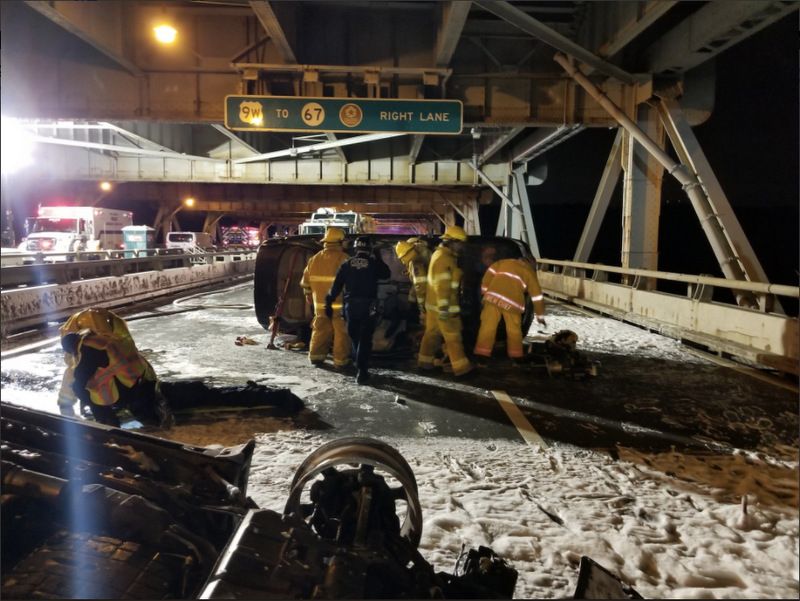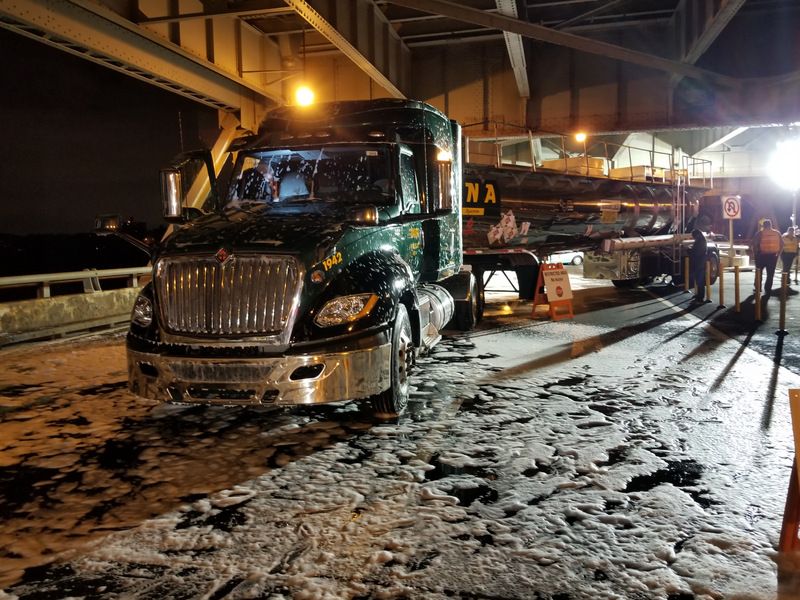10 Giant Menorahs That Will Light Up for Hanukkah in NYC
From Brooklyn to the Bronx, we’ve rounded up the most exciting giant menorahs that will light up throughout the next eight evenings!



Photo courtesy of the Port Authority of New York and New Jersey
This past weekend, the Port Authority conducted a full-scale emergency response exercise on the George Washington Bridge, which included simulated smoke and numerous emergency vehicles on and around the bridge. The exercise closed the bridge’s lower level and was conducted from 11 pm Saturday, October 14, through 8 am the next day.
.@PANYNJ — GWB Full Scale Exercise — PAPD Emergency Service Unit & Port Authority Tunnel and Bridge Agents respond during training. pic.twitter.com/poREUBK9oB
— Rudy King (@RudyKingPA) October 15, 2017
With the scary amount of natural disasters from hurricanes, earthquakes, and wildfires deeply effected our country and our neighbors to the south, seeing our city’s transportation authority conduct exercises provides at least some measure of relief knowing that if anything, should another a man-made or natural disaster hit New York, they would be (kind of) prepared.

Photo courtesy of the Port Authority of New York and New Jersey

Photo courtesy of the Port Authority of New York and New Jersey
Of course, no one is every fully prepared for what could happen. Coming up on the five year anniversary of Hurricane Sandy, we’re reminded of the devastating effects climate change can have on the city. While natural disasters are more easily predictable in terms of time people have to prepare, it’s the man-made and personally inflicted disasters by others, like the tragedy of 9/11, that warrant more measured preparedness by from the federal, state, and local emergency response.
.@PANYNJ — GWB Full Scale Training Exercise — Photos
**These photos are not from an actual emergency** pic.twitter.com/MOo45uv534
— Rudy King (@RudyKingPA) October 15, 2017
According to the Port Authority’s press release for the event, Sunday’s exercise tested “the bridge’s emergency plan for mutual aid response, enabling bridge personnel and local emergency response organizations to train together and validate response procedures.”
Involved in the exercise were the Port Authority Police Department, Port Authority operations staff, along with federal, state, and local emergency response partners.
.@PANYNJ — GWB Full Scale Exercise behind the scenes — Earlier this morning Volunteer Actors prepare for training exercise. pic.twitter.com/dimq1wyg4d
— Rudy King (@RudyKingPA) October 15, 2017
The impacts of climate change and devastating tragedies have shaped New York City, making New Yorkers more aware of their environment and the necessary steps that need to be taken to prevent or minimize future disasters.
Next, see What NYC Can Learn From Copenhagen’s Urban Planning and Plans from the Rebuild by Design Competition in Hurricane Sandy Rebuilding Task Force.
Subscribe to our newsletter